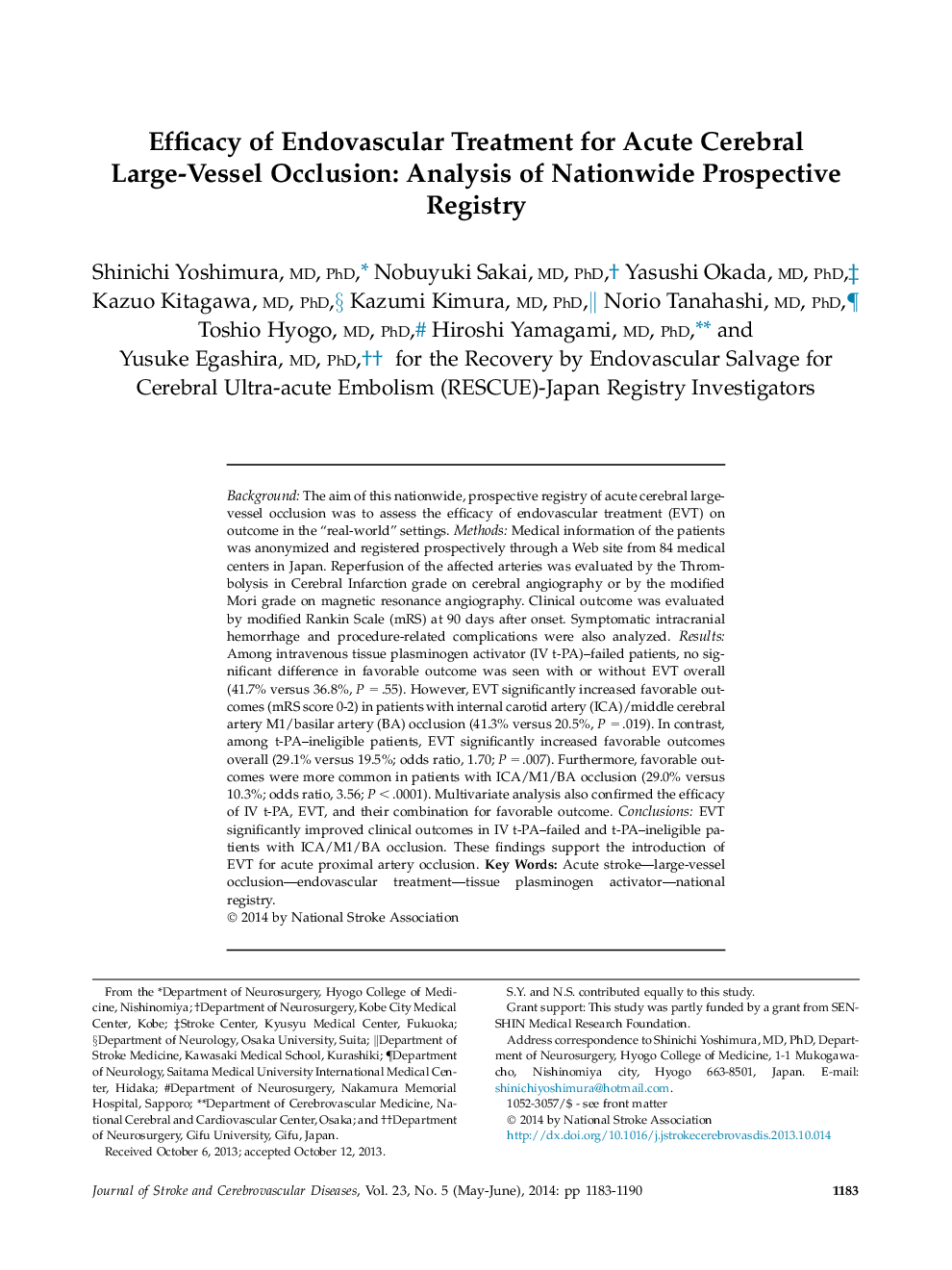| Article ID | Journal | Published Year | Pages | File Type |
|---|---|---|---|---|
| 5875201 | Journal of Stroke and Cerebrovascular Diseases | 2014 | 8 Pages |
BackgroundThe aim of this nationwide, prospective registry of acute cerebral large-vessel occlusion was to assess the efficacy of endovascular treatment (EVT) on outcome in the “real-world” settings.MethodsMedical information of the patients was anonymized and registered prospectively through a Web site from 84 medical centers in Japan. Reperfusion of the affected arteries was evaluated by the Thrombolysis in Cerebral Infarction grade on cerebral angiography or by the modified Mori grade on magnetic resonance angiography. Clinical outcome was evaluated by modified Rankin Scale (mRS) at 90Â days after onset. Symptomatic intracranial hemorrhage and procedure-related complications were also analyzed.ResultsAmong intravenous tissue plasminogen activator (IV t-PA)-failed patients, no significant difference in favorable outcome was seen with or without EVT overall (41.7% versus 36.8%, PÂ =Â .55). However, EVT significantly increased favorable outcomes (mRS score 0-2) in patients with internal carotid artery (ICA)/middle cerebral artery M1/basilar artery (BA) occlusion (41.3% versus 20.5%, PÂ =Â .019). In contrast, among t-PA-ineligible patients, EVT significantly increased favorable outcomes overall (29.1% versus 19.5%; odds ratio, 1.70; PÂ =Â .007). Furthermore, favorable outcomes were more common in patients with ICA/M1/BA occlusion (29.0% versus 10.3%; odds ratio, 3.56; PÂ <Â .0001). Multivariate analysis also confirmed the efficacy of IV t-PA, EVT, and their combination for favorable outcome.ConclusionsEVT significantly improved clinical outcomes in IV t-PA-failed and t-PA-ineligible patients with ICA/M1/BA occlusion. These findings support the introduction of EVT for acute proximal artery occlusion.
